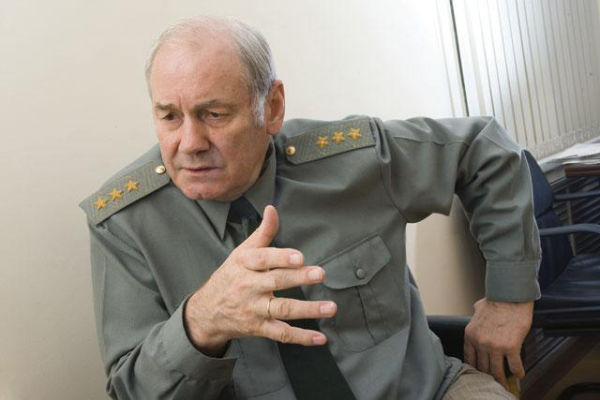Moscow. December 18. INTERFAX - Russia may deploy nuclear weapons in Belarus, but only as a retaliatory measure, retired Colonel-General Leonid Ivashov, the former head of the main Directorate for International Military Cooperation of the Russian Defense Ministry, told Interfax on Saturday.
"Only as a retaliatory measure if such weapons, nuclear first of all, will be placed on the territory of Ukraine, the Baltic States and so on. That's when it's possible," Ivashov said, commenting on the statement by the Belarusian Foreign Minister about the republic's readiness to deploy nuclear weapons in response to threats from NATO.
According to him, Russia will not be the first to deploy nuclear weapons in Belarus.
"Now is not the time to place Russian weapons on an initiative" because of the difficult relations with the United States and Europe, Ivashov said.
"Today it is undesirable and, strictly speaking, it is not necessary," Ivashov said.
Earlier on Saturday, Belarusian Foreign Minister Vladimir Makei said in an interview with RT Arabic that the republic is ready to host nuclear weapons if threatened by NATO. The Belarusian Foreign Minister, in particular, noted the buildup of NATO forces in Ukraine.
Earlier on Saturday, two Russian Tu-22M3 long-range bombers conducted patrols over Belarus, which during the flight worked out joint tasks with aviation and air defense forces of the Ministry of Defense of Belarus. The duration of the flight was about 4 hours, the Russian military department reported.
In November, Belarusian President Alexander Lukashenko said that Minsk would like to receive several divisions of Iskander-M tactical missile systems from Russia in order to install them in the western and southern directions. Earlier, Minsk announced its desire to buy long-range S-400 Triumph air defense systems from Russia.
On November 11, Russia sent two Tu-160 strategic missile bombers to Belarus. They conducted patrols in the airspace of Belarus together with Su-30SM fighters of this country. The Tu-160 is capable of carrying nuclear weapons and is part of the air component of the Russian nuclear triad.
The Iskander-M operational-tactical missile system was developed at the Kolomna Design Bureau of Mechanical Engineering (High-Precision Complexes Holding). It was reported that the missiles of the complex can carry a nuclear warhead. In the variant for the Russian army, the complex includes two types of missiles: ballistic and cruise. The flight range of the Iskander-M missiles was officially called - up to 500 km.

